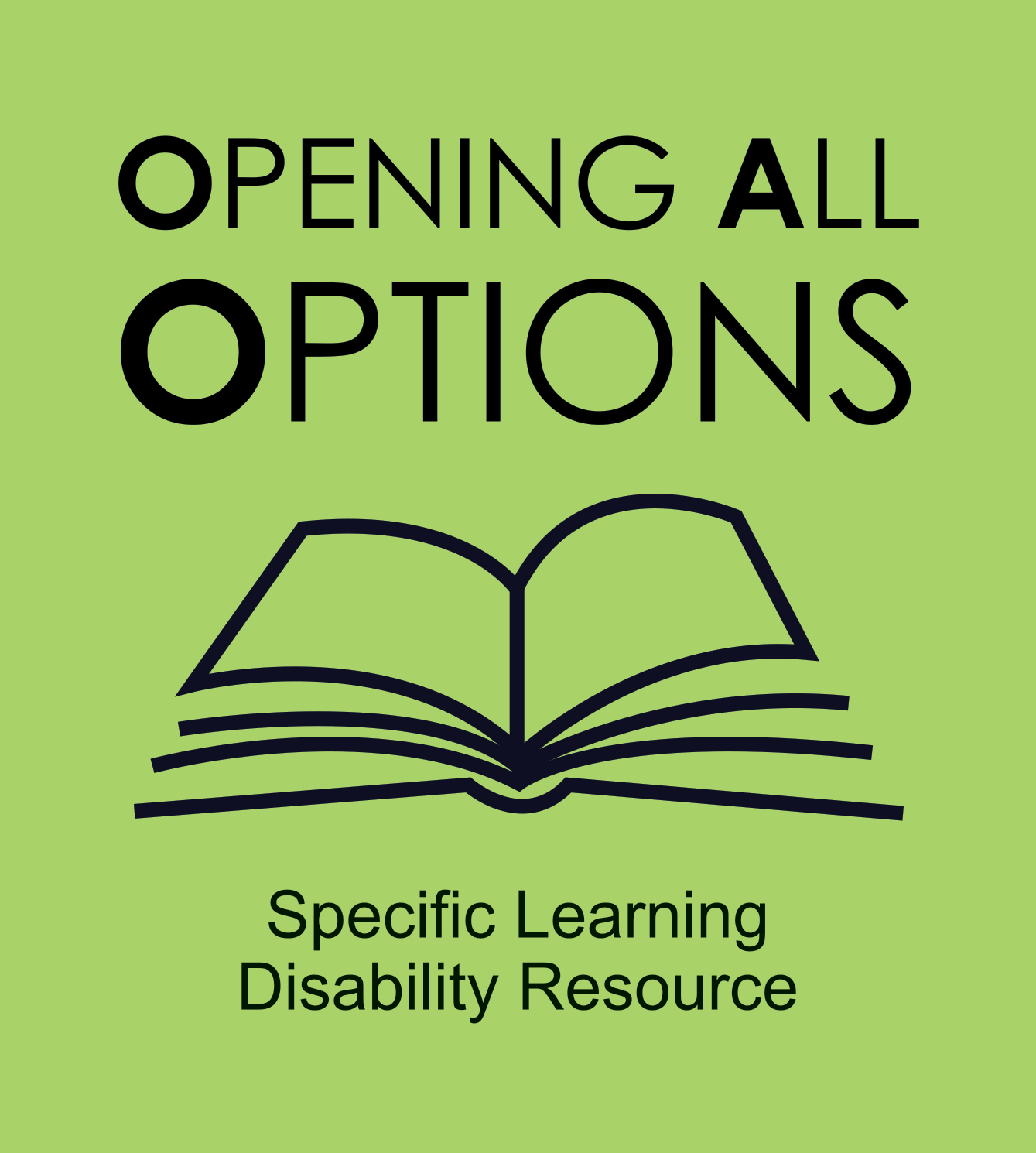Disability Specific Adjustments: Specific Learning Disability
Specific Learning disability (SpLD) is the result of a neurological condition which causes the learner to receive and process some information inaccurately. SpLD can have a significant impact on learning.
Research indicates that at least five per cent of tertiary-level students have a learning disability which can cause significant difficulties for perceiving or processing auditory, visual or spatial information. The most common learning disability found in the tertiary environment is dyslexia. Other learning disabilities are dysgraphia, discalculia, dysmusia and aphasia.
Manifestations of the disability can vary over time and SpLD is a ‘hidden’ disability. Often, a student who was diagnosed with SpLD as a child will have established avoidance, protective or compensatory strategies, which may or may not be appropriate at university. Often, the first indication for staff will be a discrepancy between the knowledge or ability a student demonstrates in class, and the results for their written assignments or exams.
While making generalisations about any disability is unhelpful and can perpetuate stereotypes, there are a number of characteristics common to students with SpLD. Difficulties resulting from errors in perceiving and processing information manifest particularly in written work in the form of:
- unusual and inconsistent spellings
- reversals or transpositions of letters in words, or of numbers in figures, formulae, symbols and dates
- omission of parts of words or sentences, or omission of auxiliary verbs, pronouns and prepositions
- lack of proper order or demonstrated sequence in writing, mathematical calculations or musical notations.
Students may also mispronounce or misread words and have difficulty acquiring new vocabulary or a new language. The reading rate is generally slower than average, though not necessarily in all areas.
Research indicates that making changes and adjusting to new situations is especially difficult for students with learning disabilities. Students may begin university with an unclear understanding of their own disability, though some will be very clear about their particular strengths and weaknesses. It is important to recognise that a student with perceptual or processing impairment will have difficulty with some academic tasks but not with others. Performance may appear uneven.
Impact of Learning Disability
The learning processes of students with learning disability may be affected in a number of ways:
- deficiencies in short-term memory, and cognitive processing limitations are common. This means that students may have difficulty following sequences or complicated directions and with integrating material from a number of sources.
- problems following or creating a sequence will interfere with many things in the learning environment: following and understanding the structure of a lecture; remembering facts presented chronologically; seeing the relationship between a main idea and subordinate ideas in a text.
- students with a learning disability sometimes report information overload and confusion resulting from having more ideas (and having to hold on to them) than they can manage to translate into acceptable words or structures. They may have difficulty in moving from the role of writer to that of reader, and objectively viewing the ideas, organisation and style of their written assignments, and achieving coherence in writing.
- students may have difficulty with the ‘search and locate’ strategies required in library work and in independent learning generally.
- when reading rate and reading comprehension are slow, difficulties are compounded when large amounts of material must be dealt with in a short space of time, or when many new words or concepts must be learned and incorporated into understanding.
- visual memory skills may be poor. By comparison, oral language and discussion skills are often exceptional, though students are likely to be extremely reluctant to read aloud.
- manual dexterity or coordination problems may be evident, often as a result of difficulties in judging distance. Students may also have difficulty interpreting two- or three-dimensional models or diagrams and following maps or directions.
- heightened anxiety levels are common in test or performance situations. Anxiety about performing in front of others may affect participation in tutorials. Students will deal with anxiety in any number of ways – from medication to meditation, or simply by avoidance.
Disability Practitioner Strategies
There are a range of services and equipment that are commonly facilitated by Disability Practitioners as reasonable adjustments for students with learning disabilities.
These include:
- access to copies of peer lecture notes
- access to recorded lectures or a professional note-taker
- provision of screen reader and word prediction Assistive Technology software
- access to electronic formats of prescribed reading material
- provision of Assistive Technology or scribe in examinations
- provision of examination questions in electronic format
- provision of additional time prior to examinations for computer set up
- provision of additional time within examinations due to reduced processing speeds
- arranging access to Assistive Technology in practicums
As a disability practitioner it may be helpful to be aware of inclusive teaching and assessment strategies that can assist all students. ADCET has identified some specific strategies that may be useful for students with a Specific Learning Disability Specific Learning Disability Inclusive Teaching and Assessment Strategies
Further information
Opening All Options: Specific Learning Disability Resource

Opening All Options (OAO) is a comprehensive resource for disability practitioners, academic and teaching staff to support students with Specific Learning Disability (SpLD) in the post-secondary education sector.
OAO provides advice and tips for Disability Practitioners and Teachers and Academics on how best to support post-secondary education students with SpLD to achieve success in their studies. It includes information on pre-screening, reasonable adjustments you can make, teaching strategies, study skills, assistive technology, and universal design solutions to assist you address the learning barriers faced by students with an SpLD. https://www.adcet.edu.au/oao/

